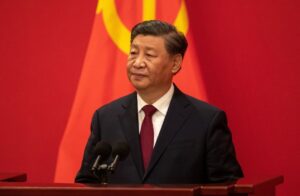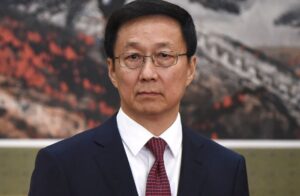China, with its rich history and complex political landscape, has had a series of leaders since the inception of the People’s Republic of China in 1949. Below is a detailed list of the presidents of China, arranged in order of their tenure.
READ ALSO: Presidents That Have Ruled India Till Date
| President | Tenure |
|---|---|
| Mao Zedong | 1949 – 1959 |
| Liu Shaoqi | 1959 – 1968 |
| Dong Biwu (Acting) | 1968 – 1972 |
| Song Qingling (Honorary) | 1968 – 1972 |
| Zhu De (Acting) | 1972 – 1975 |
| Dong Biwu | 1975 – 1976 |
| Hua Guofeng | 1976 – 1981 |
| Ye Jianying (Acting) | 1978 – 1983 |
| Li Xiannian | 1983 – 1988 |
| Yang Shangkun | 1988 – 1993 |
| Jiang Zemin | 1993 – 2003 |
| Hu Jintao | 2003 – 2013 |
| Xi Jinping | 2013 – Present |
First President of China: Mao Zedong

Mao Zedong was born on December 26, 1893, in Shaoshan, Hunan Province, China. He was the son of a wealthy farmer and received an education that exposed him to various ideologies, eventually leading him to embrace Marxism.
Before becoming the President of China, Mao Zedong played a crucial role in the founding of the Communist Party of China (CPC) and the People’s Liberation Army (PLA). He was a key figure in the Chinese Revolution and served as the Chairman of the CPC.
READ ALSO: Presidents That Have Ruled Comoros Till Date
Notable Achievements
Mao Zedong is credited with founding the People’s Republic of China in 1949, unifying the country under communist rule.
He implemented several reforms, including land redistribution and the nationalization of industries. His leadership also saw the establishment of China as a major player on the world stage.
Downsides
Mao’s tenure was marked by significant challenges, including the Great Leap Forward and the Cultural Revolution. These policies led to economic hardship, widespread famine, and social turmoil, resulting in the loss of millions of lives.
Current President of China: Xi Jinping

Xi Jinping was born on June 15, 1953, in Beijing, China. He is the son of Xi Zhongxun, a revolutionary veteran and one of the founders of the CPC.
Xi Jinping grew up in a politically influential family, which shaped his early understanding of governance and politics.
Before becoming the President of China, Xi Jinping held various positions within the CPC, including Governor of Fujian Province, Party Secretary of Zhejiang Province, and Vice President of China. He also served as the General Secretary of the CPC, the highest-ranking official within the party.
Notable Achievements
Since assuming office in 2013, Xi Jinping has implemented significant economic reforms, strengthened China’s global influence, and launched ambitious projects such as the Belt and Road Initiative (BRI).
He has also focused on consolidating power within the CPC, with anti-corruption campaigns targeting high-ranking officials.
Downsides
Xi’s tenure has been marked by increased authoritarianism, with crackdowns on dissent, tighter control over Hong Kong, and the treatment of Uyghur Muslims in Xinjiang. His push to remove term limits has also raised concerns about the potential for prolonged one-man rule.
READ ALSO: Presidents That Have Ruled São Tomé and Príncipe Till Date
Current Vice President of China: Han Zheng

Han Zheng was born on April 22, 1954, in Shanghai, China. He joined the Communist Party of China (CPC) in 1979 and gradually rose through the ranks, holding various positions in Shanghai, including the city’s Mayor and Party Secretary.
Han Zheng is known for his administrative skills and his ability to manage complex urban challenges in one of China’s most dynamic cities.
Notable Achievements
During his tenure, Han Zheng played a pivotal role in advancing Shanghai’s economic growth, making it one of the leading financial centers in Asia.
He oversaw significant infrastructure projects, including the expansion of the Shanghai Free Trade Zone, which helped attract foreign investment and boosted international trade.
Han also contributed to the successful hosting of the 2010 World Expo in Shanghai, showcasing China’s progress on the global stage.
Downsides
Despite these achievements, Han Zheng’s tenure faced criticism for the growing income inequality in Shanghai and the challenges of managing the city’s rapid urbanization, which led to social and environmental issues.
Additionally, his tenure was marked by strict enforcement of party discipline, which some viewed as stifling political dissent and limiting public participation in governance.
Conclusion
The leadership of China has evolved significantly since the establishment of the People’s Republic of China in 1949. From Mao Zedong’s foundational role to Xi Jinping’s ongoing influence, each president has left a distinct mark on the country’s history.
The current administration under Xi Jinping and Han Zheng continues to shape China’s future, navigating both domestic challenges and international pressures.
